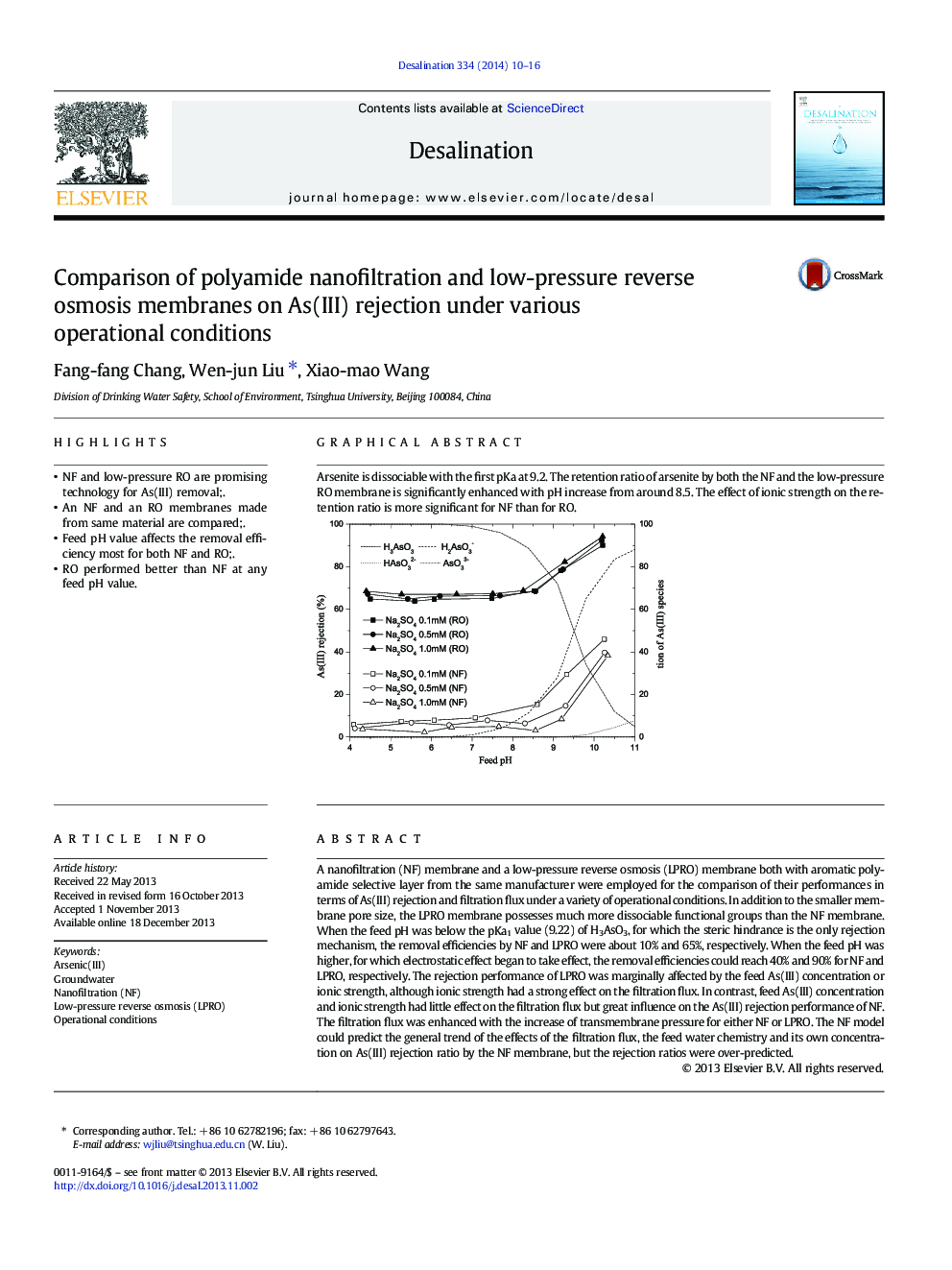| کد مقاله | کد نشریه | سال انتشار | مقاله انگلیسی | نسخه تمام متن |
|---|---|---|---|---|
| 623716 | 882777 | 2014 | 7 صفحه PDF | دانلود رایگان |

• NF and low-pressure RO are promising technology for As(III) removal;.
• An NF and an RO membranes made from same material are compared;.
• Feed pH value affects the removal efficiency most for both NF and RO;.
• RO performed better than NF at any feed pH value.
A nanofiltration (NF) membrane and a low-pressure reverse osmosis (LPRO) membrane both with aromatic polyamide selective layer from the same manufacturer were employed for the comparison of their performances in terms of As(III) rejection and filtration flux under a variety of operational conditions. In addition to the smaller membrane pore size, the LPRO membrane possesses much more dissociable functional groups than the NF membrane. When the feed pH was below the pKa1 value (9.22) of H3AsO3, for which the steric hindrance is the only rejection mechanism, the removal efficiencies by NF and LPRO were about 10% and 65%, respectively. When the feed pH was higher, for which electrostatic effect began to take effect, the removal efficiencies could reach 40% and 90% for NF and LPRO, respectively. The rejection performance of LPRO was marginally affected by the feed As(III) concentration or ionic strength, although ionic strength had a strong effect on the filtration flux. In contrast, feed As(III) concentration and ionic strength had little effect on the filtration flux but great influence on the As(III) rejection performance of NF. The filtration flux was enhanced with the increase of transmembrane pressure for either NF or LPRO. The NF model could predict the general trend of the effects of the filtration flux, the feed water chemistry and its own concentration on As(III) rejection ratio by the NF membrane, but the rejection ratios were over-predicted.
Arsenite is dissociable with the first pKa at 9.2. The retention ratio of arsenite by both the NF and the low-pressure RO membrane is significantly enhanced with pH increase from around 8.5. The effect of ionic strength on the retention ratio is more significant for NF than for RO.Figure optionsDownload as PowerPoint slide
Journal: Desalination - Volume 334, Issue 1, 3 February 2014, Pages 10–16